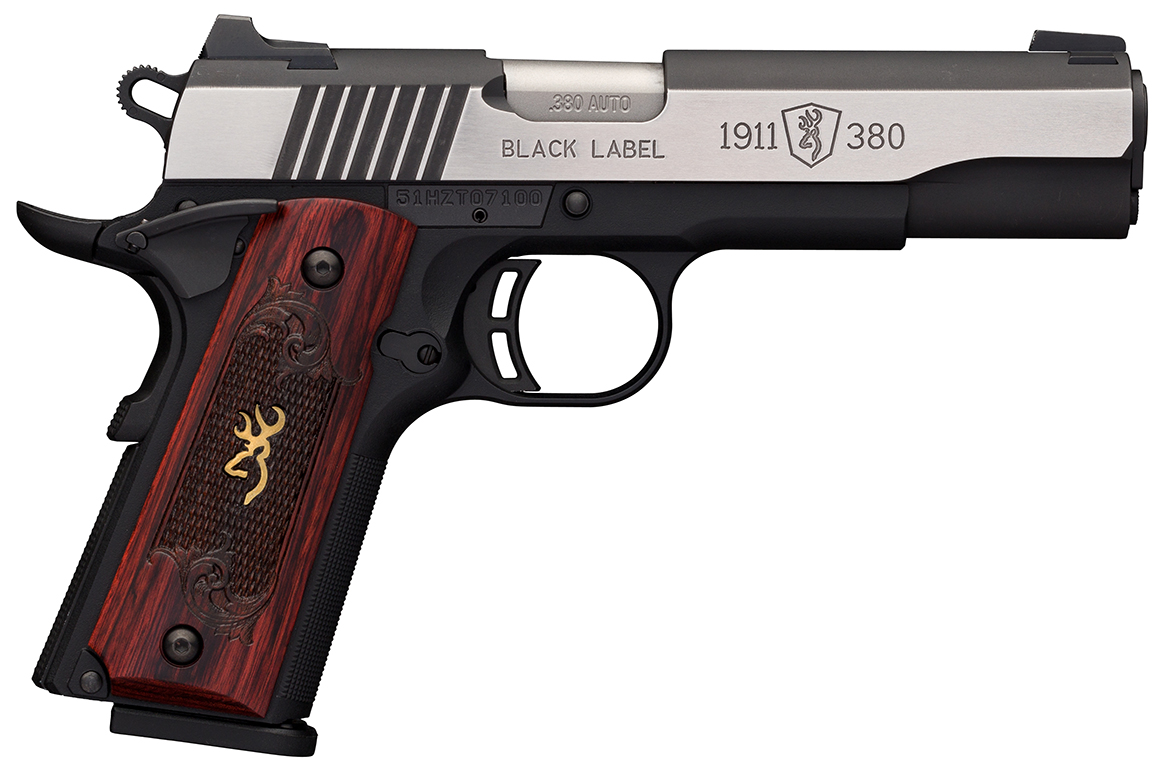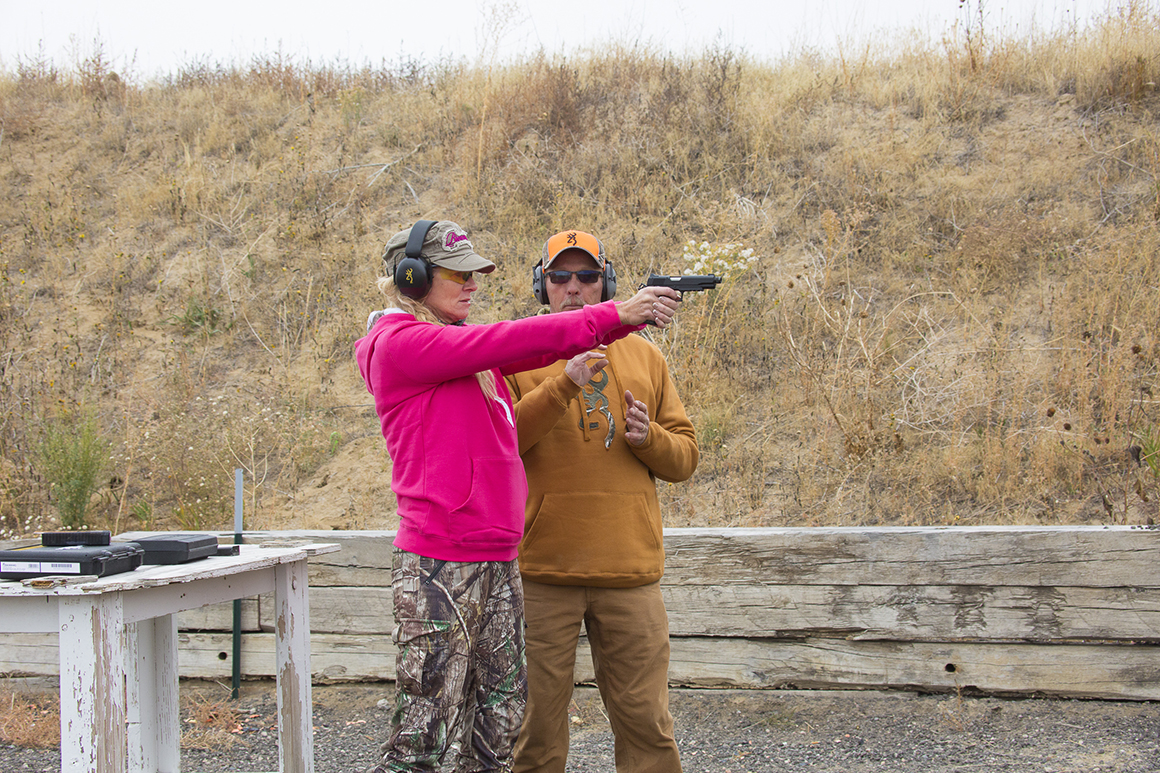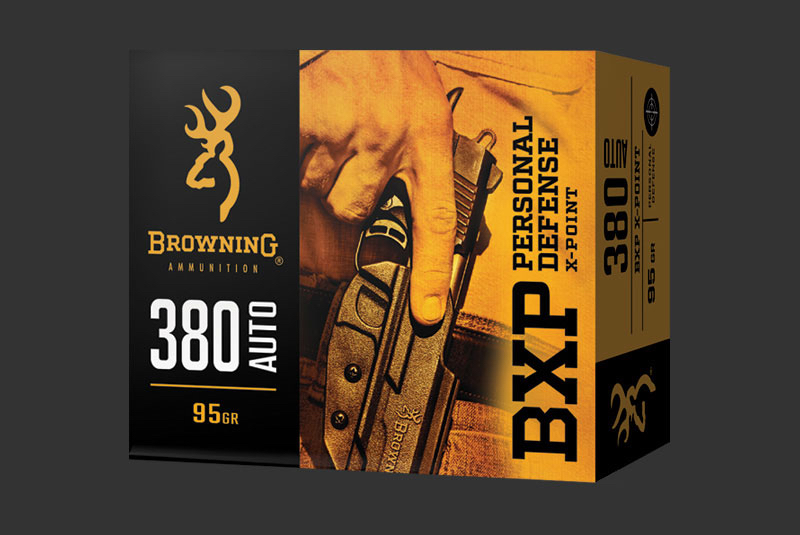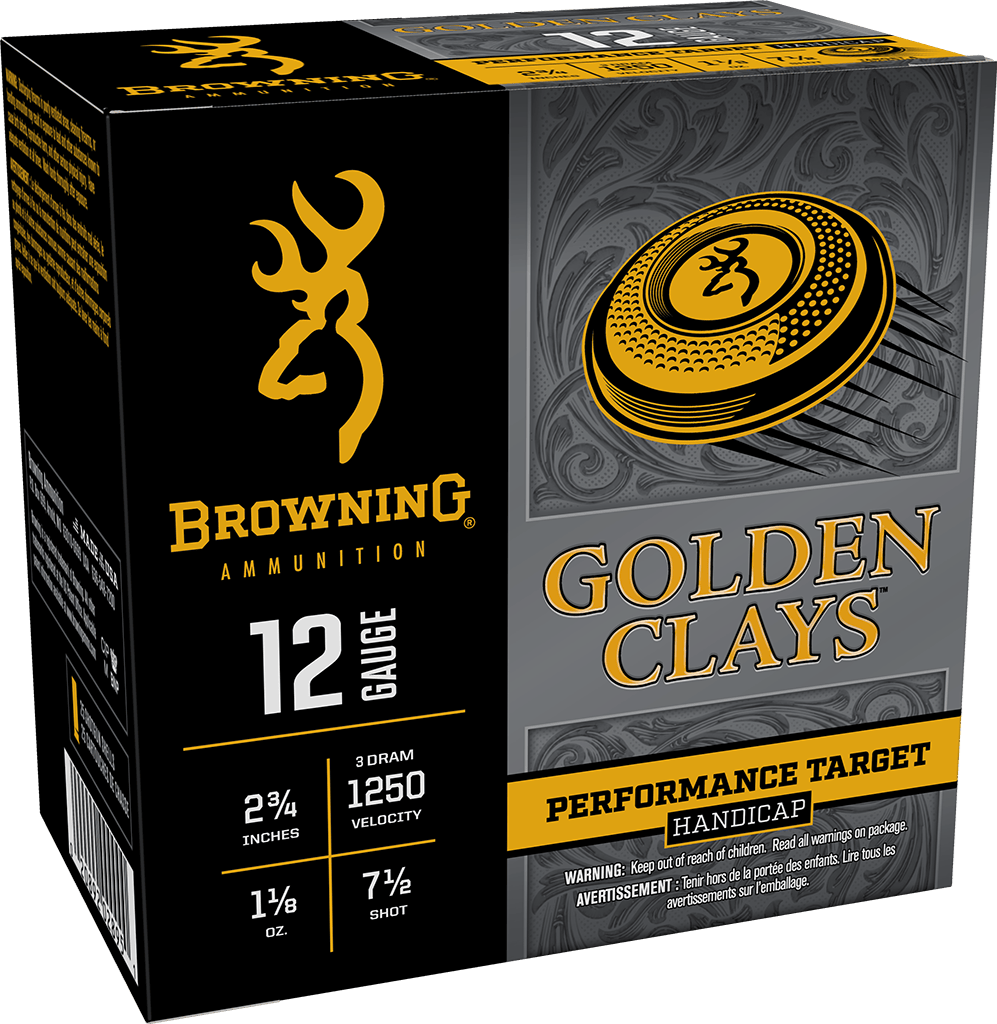Close at Hand – The 380 for Self-Defense
Tens of millions of Americans now carry concealed handguns legally, either with permits or in states which do not require permits to do so. Almost a quarter of all women own at least one gun, and surveys show that half of Americans who do not presently own a gun would consider doing so. For most women, and men who own guns, protection is a major incentive for doing so. Which handgun, though, is the one to purchase as a first or second pistol, for both women and men?

Many years ago, a man insisted that his wife show me the pistol she carried for self defense. Opening her purse she took out a mini 22 revolver that resembled nothing so much as a cap gun you might find in a box of caramel corn. My feeling could best be described as sinking. The 22 is a more than venerable caliber, and in the hands of an expert, highly trained shooter might conceivably be used effectively for self defense–if enough rounds could be gotten into a vital area of a close-range assailant in a short enough amount of time. But for most people it’s an excellent starting point for handgun shooting (Browning BPR target loads and the Browning’s 1911-22 are good choices in ammunition and pistol for this). It’s hardly a “stopper” when your protection, or the protection of your family, is on the line. Thinking of the line from Jaws– “You’re going to need a bigger boat!”–I wanted to say to the woman, “You’re going to need a bigger gun!” How much bigger, though, would be the question.

First, though: There are few more serious decisions than to carry a firearm for self-protection. Therefore there is the serious obligation to know what your local laws demand. Among other things, do you need a permit or not and what are the requirements for obtaining a permit if you do need one? Where can you carry your legal concealed weapon, and where can’t you? Is it necessary to inform a law-enforcement officer you come into contact with that you have a weapon (even without a law, it is always best to do so)? When is it lawful not only to fire a weapon but simply to display it (and in a majority of protection situations, merely showing a firearm can cancel the threat–another reason why that woman’s 22, that looked like a toy, still makes me shudder)? And all this is just the minimum amount of knowledge you should have.

Back to calibers, there is something of a mythology about the one-shot handgun for self-protection. What you invariably hear is the superiority of something like the 45 Auto, available in the Browning BXP 45 Auto 230. Without question, a 45 projectile carries far more mass and impact than lighter calibers; but it’s unrealistic, even with it, to count on halting a self-protection incident with only one shot. As with any situation in which you have to use a handgun, you need to be prepared to fire multiple rounds at the center of your target (for which reason taking a self-defense handgun-shooting course is invaluable).
The other consideration is the size and weight of a 45: Will the average person be discouraged from carrying one because it is big and heavy, and recoils powerfully? A handgun that is locked away in the gun vault at home, because a person finds it unpleasant to shoot and carry, is going to be of no use whatsoever if you need to protect yourself with it.
A handgun such as the Browning 1911-380, loaded with BXP 380 Auto 95s, whose X-Point Technology metallic hollow point guards the lead tip and ensures worry-free feeding, meets one of the principal rules of concealed carry by being a gun with the level of recoil and accuracy that gives a person the confidence to practice with it regularly, and to fire it without concern in a self-protection situation, along with being ergonomically designed, light, and slim enough for continual and discreet carrying.
The lingering question about the 380 is whether or not it is “enough gun.” Opinions, to be clear, line up on either side. Some claim they would not touch a 380 with a ten-foot pole, in fact would rather have a ten-foot pole with which to defend themselves. Others are far more clear headed.
The basic rules of what any self-protection gun and round should do is to place a bullet that will rapidly expand to the maximum when it hits its target; should transfer all of its energy to that taget; be able to be handled accurately with manageable recoil; not pass through the target, especially in a domestic surrounding; and be capable of firing multiple rounds without fear of jamming. With all that, the 1911-380 fits the bill.
Yes, it is a great choice for anyone who thinks he or she may be recoil-shy and would be hesitant for that reason to use a handgun in self-protection. But it is a great choice for anyone who wants to be sure he has a firearm always on hand for self-protection, bad things seldom sending advance warning.
Follow Browning Ammunition’s social media channels for more hunting and shooting tips and updates on Browning Ammunition supported events and promotions on Facebook, You Tube, Instagram and Twitter.



